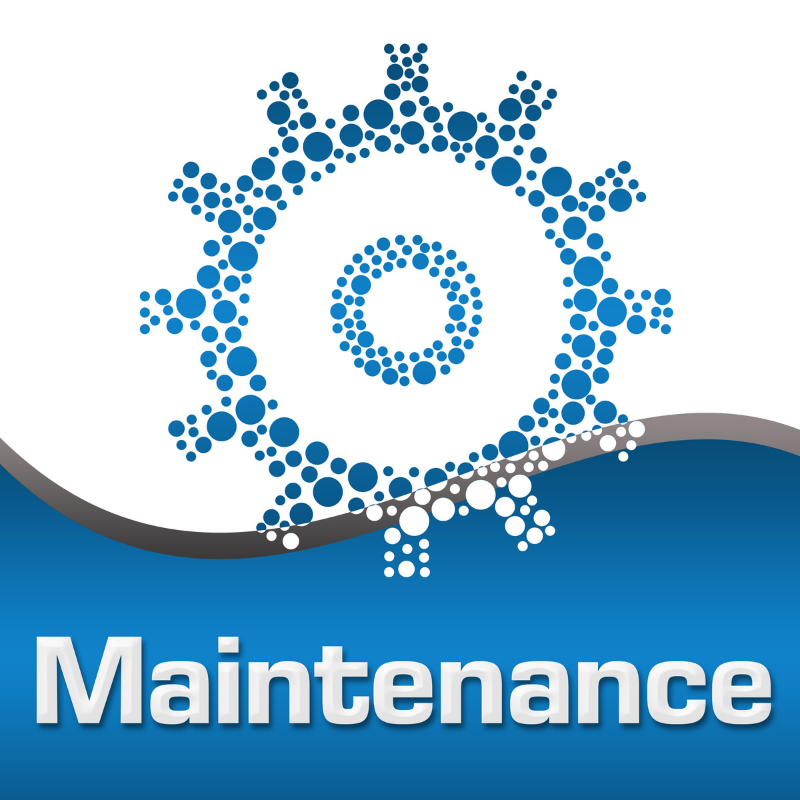Learn how to scale up your website maintenance offering so you can build a sustainable and growing business
Pricing up a website project is tough, but estimating a cost for website maintenance? That’s a whole other challenge.
When you engage a new client in the web development process, it’s difficult to know how much ongoing support that client will need once the website has been launched. This makes knowing how much you should charge to manage the website tricky. You don’t want to price too high and scare your client away, and you don’t want to agree to a price so low that you lose money and take on unnecessary stress.
Let’s take a look at how much to charge to maintain a website from the lowest level up, and what those services might look like.
#1 Knowing what’s essential

To keep a website running, there are a few services that you can’t do without. These include:
- Website hosting
- Domain name
- Software upgrades
- Backup and restoration
Web hosting and domain are fairly self-explanatory. You can’t possibly have a website without somewhere for it to live (the hosting) or a URL by which it can be accessed (the domain name).
Some might argue that software upgrades and backup services aren’t essential. But I would strongly disagree — any business owner serious about their website will want to keep the software their website runs on in the tip-top condition. I’ve seen first-hand how quickly an out-of-date website can be destroyed by malware, especially if the site runs on an open-source CMS like WordPress.
These services could form your most basic website maintenance package.
I always offer this service to new clients, and they have always accepted it.
As this is a very “hands-off” level of support, you probably can’t charge too much for it. If you integrate this support package in your business, make sure your clients know they’re not going to get any of your time each month: this package is just to keep things ticking over.
#2 Enhancing the essentials
If your client is more than happy with the essentials package that we outlined above, perhaps they’d be interested in something a little more robust.
There are a few options to up-sell your website maintenance package, and this might include:
- Security monitoring software
- Integrated website analytics dashboard
- Automatic broken link/image checking
- Web forms testing
- Performance optimisation
These additional services can deliver a lot of value to your client with minimal cost to you. I use Sucuri to monitor client websites, and I use Monster Insights to connect their Google Analytics account to the website and bring the stats right into their dashboard for convenience.
If your client is actively producing content and linking to external and internal pages, it is also worth installing a broken link checker. Over time, pages on the web get deleted or moved and so references to them become broken. It’s important to stay on top of this to keep your own content in good shape.
This is a largely automated service that will require minimal input to maintain.
However, with more robust management support comes the increasing need to start enhancing your website maintenance contract further by selling your time.
#3 Selling your time to make minor changes and fix bugs
The first two levels of support I have covered so far are largely automated and don’t require much input from you.
But the more active your client is on their website, the more likely it is that they will need your input.
Detecting dead links is all well and good, but then what?
Checking for broken plugins is cool, but who’s gonna fix them? (Hint: not your client)
It is important to bundle in some time with your website maintenance contract. The challenge here is to make it clear that your time at this level of support is going to be restricted to bug fixing and minor changes. My website maintenance plan includes:
- Code fixes/configuration updates if plugin upgrades cause problems
- Restoration of any plugins, or the website as a whole if needed
- Text changes
- Updates to navigation menu
Each of these things takes time. And though I loathe the phrase, in business time is money. And so these minor jobs must be paid for. Your client might take issue with paying for bug fixes. It’s not their fault that an upgrade went badly. But in truth, it’s usually not yours either. It just happens.
Concerns can generally be mitigated by explaining to your client that this is a peace of mind service, and that should anything go wrong with the website, you will be on hand to resolve those issues. Maintaining a website in this way is no different to maintaining a car, or a home. Things need upgrading.
How much time you allocate to bug fixing and making website tweaks is entirely up to you. At this level, I would recommend stipulating no more than 4 hours per month in your website management contract (just be sure to track time!)
The next and final maintenance level will take you above and beyond the three we’ve just outlined.
#4 Selling your time to help grow their business

Everything we’ve discussed up until now places you very much in a supporting role.
In some cases, your client will need more than this. Perhaps the most obvious situation is e-commerce websites, where the website provides a significant income for the business.
In these cases, how much you charge to manage the website is almost limitless. Here are some services that you can offer under an ongoing management fee:
- Strategy sessions
- Content writing
- Landing page design
- Graphic design
- Mentorship
At this point, some of these services can begin to branch off into self-contained projects delivered in an ad-hoc way. For example, your client might prefer to pay for graphic design services only when needed.
But it’s important to identify these services as strategic. The support we covered previously is very functional, in that you will be delivering a task-oriented service.
This is very different to strategic services that require thinking, planning, expertise (beyond your job title) across discipline and a good management head to bring it all together. Essentially, this support plan almost places you as one of the team.
You can take any combination of the services listed above and add them to your “premium” maintenance plan. It is important to bound it by time: for example, you might offer two 45 minute strategy calls or 10 content pieces written per month.
Pro tip: clients who value their website and their relationship with you enough to buy-in to this level of support are worth finding and keeping ????
Make your monthly maintenance package your own
For maximum effect be sure to wrap your maintenance plan in a service that’s unique to you.
Even if you plan to outsource some of it, clients buy into the way you do business. This means only making promises you can deliver on (if you can’t respond to support requests at the weekend, explicitly state this in your contract), and not being afraid to show your personality (after a code upgrade why not fire off a courtesy email telling them all systems are running smoothly?)
It is this extra consideration to the way you do business — those small personality quirks — that make working with you memorable and pleasant. A support contract isn’t just an additional revenue stream for your business. It doesn’t have to be about going through the motions: it’s a way to strengthen your client relationships and help them grow.
Take this approach to your web development service and you’ll have happier clients and a better business.
Matt Saunders is a business coach for freelancers. He’s worked in the sector for 20 years and loves lifting up others to help them become the best version of themselves. Find out how he helps freelance designers on his web designer coaching page.

